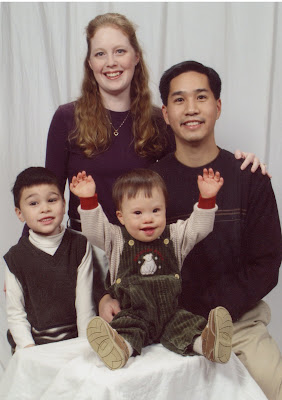Last weekend I was at the 2nd annual
Ancient Evangelical Future conference hosted by Northern Seminary (and cosponsored by IVP). The focus this year was "on the primacy of the biblical narrative," which is the first major clause of the
Call to an Ancient Evangelical Future. In that document, Bob Webber asked, "Who gets to narrate the world?" (which incidentally is the title of
his forthcoming posthumous book from IVP) and called for the evangelical church to recover the narrative story of the Triune God's Creation, Incarnation and Re-creation.
The
first speaker was Kevin Vanhoozer, whose talk on "The Drama of the Christ" was something of a Cliffs Notes version of his landmark
The Drama of Doctrine. His premise is that while narrative is something that is understood, drama is something to be enacted, and as such is a better metaphor for the gospel, doctrine and doing theology. In recent years evangelicals have championed narrative theology as a healthy alternative or corrective to strictly propositional formulations of the faith. Vanhoozer pointed out some limitations of narrative and argued for drama as a call to
participate in the Christian story. While narrative
tells, drama
shows. Drama thus goes beyond narrative. It is not just something to be believed, but to
follow, as in a script.
I like this metaphor partly because I was in theatre in high school and appreciate the connections between living the Christian faith and performing a play. It's not merely that a story is read or understood, but instead a script is embodied and enacted. And while the Christian drama provides a normative script for all Christians, every performance is distinctive based on every local church and Christian's context and social location. I remember seeing a performance of
Hamlet in modern-day garb, and I once saw a production of
Death of a Salesman with an African American cast, which added another whole layer of dynamics and meaning while still being a faithful interpretation of the original text. Likewise, understanding the Christian story as a dramatic narrative means that every one of us participates in the drama, not just in the liturgical experience of corporate worship but also in the praxis of Christian living, discipleship, ministry and mission.
During the
panel discussion, Edith Humphrey pushed back on Vanhoozer's theodramatic model a bit because she felt that it was too activist. She said she was reacting out of her activist background in the Salvation Army. This suggested to me that different parts of evangelicalism need different correctives. Some of us who are too propositional need more narrative and some who are too theoretical could stand to be more activist, while those who are perhaps over-activist might need the pendulum swung a different way.
One of my IVP colleagues reacted similarly to Humphrey and said that Vanhoozer emphasized action too much and didn't give enough room for theology of God apart from divine or human action. My response was that properly understood, drama is not just about "plot development" (action/activism) but also focuses on the characters of the drama. Thus we have room in a dramatic model for theology proper - character study of the Triune God and ontological issues of his attributes. My wife, who has her master's in worship, has long had a working definition of worship as praising God both for
who he is and for
what he has done. Who he is is the character of the drama; what he has done is the plot. And the Christian drama explores both, in our worship and theology. (And literary/theatrical criticism also includes aspects like setting, genre, style, mood and theme, giving room for all sorts of categories of theodramatic study and method.)
Vanhoozer said that just as silence is an integral part of music, rest is an integral part of drama. So drama doesn't merely focus on activism - both reflection and action are necessary components of the drama. Vanhoozer's larger concern is that too many evangelicals focus too much on the propositions, and he said that "reading for the propositions is like listening to music just for the melody." Sure, we can single out the melody when we listen to a piece of composition, but there's often so much more going on than just that major melodic theme. Likewise, when we read Scripture or do theology, sure, we can lift out certain propositions, but there's so much more going on than that.
Another point raised in the Q&A was whether historical-critical methods of exegesis and expository preaching do violence to the text by superimposing an alien narrative upon the Christian story. Panelist
David Fitch asked, "Is expository preaching heretical?" Vanhoozer said no, that all exegetical and expository methods are subject to the Christian narrative/theodrama. I think he could have said more on this point - seeing the narrative drama of the Christian story means that we can utilize all sorts of methods and tools for enacting the drama. So there is a place for expository sermons, but there are also places for dramatic interpretations of biblical stories, personal monologues, artistic reimaginings and what Vanhoozer called "world-for-world" translations of the text. I think a dramatic understanding of the Christian story opens us up (especially preachers and worship leaders) to all sorts of cultural creativity in performing the gospel for our contemporary contexts.
One last comment: Vanhoozer pointed out that all of us are already participants in some drama or another. Whereas Bob Webber would say that there are different narratives of the world competing for our allegiance, Vanhoozer noted that we are already enacting dramas whether we realize it or not. Every time we drink a Coke, we are participating in a particular consumerist drama. We have a choice of either living out a narrative of "the Good Life according to the American Dream," as many suburban Christians do, or we can enact a counterdrama that challenges the rival dramas of our culture.


